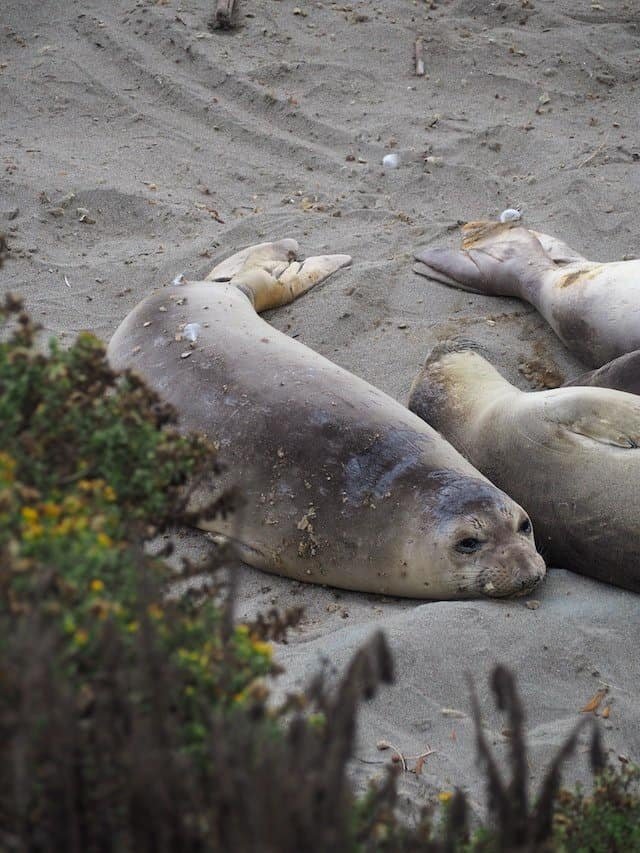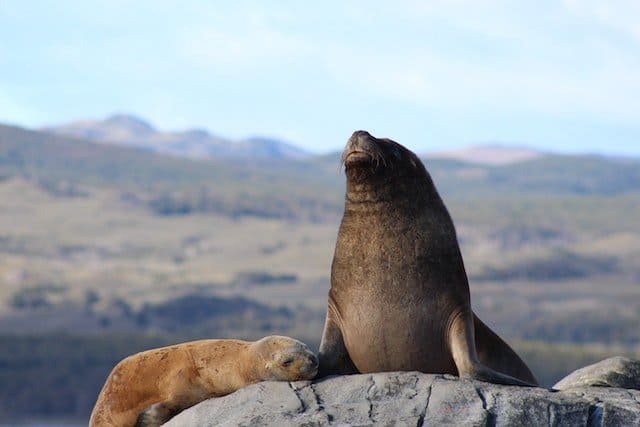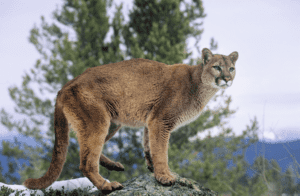Many species of sea lions are critically endangered, and their plight has gained widespread attention. The worldwide decline of sea lion populations can be attributed to a number of factors. An overview of these factors will let us know why sea lions are endangered.
Sea lions are marine mammals widely observed near ports and coasts all over the world. They’re often referred to as “lions of the sea” because of their similarity to their land-dwelling namesakes, both in terms of manes and roaring. They are highly intelligent and often employed in performances and trained for duties. They each have specialized in their respective locations and ecological niches, but they all have similar diets and habits.
In addition to being able to work on all fours, sea lions are distinguished from other pinnipeds by their long fore flippers, external ear flaps, large chest and belly, lack of facial hair, and short, dense fur. They’re linked to seals and walruses. The Otariidae family includes both fur seals and sea lions (the name literally translates to “eared seals”).
There are six sea lion species including Galapagos sea lions, California sea lions, Australian sea lions, Steller sea lions, South American sea lions, and New Zealand sea lions.
Table of Contents
Why Are Sea Lions Endangered? Factors You Need To Know
Pollution, climate change, bycatch, and invasive species are all threats to sea lion populations. Both Australian and New Zealand sea lions are in danger from gillnet fishing, but climate change, disease, and pollution pose a greater risk to Galapagos sea lions. The following factors will let us know why are sea lions endangered.
1. Humans:
For a very long period, people were to blame for the population decline. Nowadays, it is prohibited to hunt, hurt, or kill a sea lion in many places. This does not, however, prevent such gatherings from being held unlawfully. While sea lion protection legislation exists in several nations, they are frequently not upheld. But it’s not only people; sea lions are also still in danger from a number of ecological issues.
2. Climate change:
Ocean conditions are susceptible to the effects of climate change on all species of sea lions. It may affect how many fish prey are present in sea lion habitats, particularly if warmer temperatures diminish currents.
3. Pollution:

Ocean pollution is a hazard to sea lions and all other marine life along the coast. Top predators like sea lions are especially vulnerable to the effects of pollution and hazardous algae blooms, which can cause neurological abnormalities, behavioral changes, and even death in their smaller prey species.
Sea lions are commonly entangled by plastic debris in the ocean and on beaches. In 2021, researchers made headlines when they determined what had been killing California sea lions for 40 years: a strange cancer. Toxic substances from garbage, insecticides, and oil refinery byproducts were to blame.
4. Bycatch:
While purposeful culling and shooting of sea lions has declined, some animals are still killed inadvertently in net fisheries. Sea lions’ reproductive success and overall health may be negatively impacted by commercial fishing due to changes in the distribution and amount of sea lions’ prey. When sea lions are caught in fishing gear like traps or gillnets, they can be dragged and swum for long distances, which can cause them to become exhausted, hurt, or unable to eat properly.
The endangered Australian sea lion is drawn to the bait material in rock lobster pots, but unfortunately, this also increases its risk of becoming entangled in fishing gear and drowning. Particularly vulnerable to drowning when trapped in the pots are young pups.
5. Health issues:
Many different illnesses affect adult sea lions. Epilepsy, pneumonia, and cancer are among them. Adults are disproportionately affected by these issues. They can be found in the wild and in zoos. Even with human intervention, the prognosis for a Sea Lion infected with them is bleak. Parasites and tapeworms are also major health concerns for sea lions.
While not usually fatal, they can have a significant impact on the animals’ well-being. Sea lion subpopulations are particularly susceptible to disease outbreaks because of their highly concentrated character. New Zealand sea lion pup mortality rates were 50% in 1998, 33% in 2002, and 21% in 2003 due to epizootic outbreaks in the Auckland Islands. Klebsiella pneumoniae, a bacterium that causes severe respiratory sickness, was ultimately determined to be the source of the outbreak in later years.
To prevent the spread of canine distemper virus to the Galapagos sea lions, it was advised that all dogs on San Cristobal, Santa Cruz, and Isabela islands be vaccinated in 2001.
6. Shortage of food:
Female Sea Lions do their best to care for their cubs, but they ultimately prioritize their own needs. They will cease making milk if they are hungry and cannot feed their young. Male Sea Lions may eat them if their primary food source has dried up.
What do sea lions eat?
Sea lions are carnivores that eat crabs, octopus, hake, squid, and clams. However, here is a complete list of food that sea lions consume.
- Lamprey
- Steelhead salmon
- Cephalopods like squid and octopus
- Hake
- Northern anchovy
- Opaleye
- Herring
All of their prey comes from the ocean, as they are marine predators. They live near the coast and use both their brains and their bodies to catch prey.
The California sea lion is the most common type of sea lion found on the West Coast of North America. These animals are top predators in the sea, eating over 50 different types of fish. Squid, octopus, hake, anchovy, opal-eye, and herring are some of their favorite and most consistent fishy meals.
Sea lions, especially in coastal regions where larger fish are plentiful, are known to eat prey that are significantly larger than themselves. One major food source for California sea lions in Washington is the annual spawning of millions of salmon along the state’s coast. They frequently hang out around the lake’s outlet, where they feast on lamprey, salmon, and other large fish. When eating, sea lions break off big pieces of their prey and consume them whole.
Some adult sea lions, especially those that are larger in size, can eat as much as 8% of their body weight every day.
Where do sea lions live?
- You can only find the California sea lion on the western coast of the United States or Canada. Its habitat stretches from the Gulf of California to Mexico and the southern areas of Alaska. The California sea lion is the most common kind of sea lion seen in zoos and circuses.
- Some male Stellar sea lions can weigh up to 2,500 pounds, making them the heaviest marine mammal in the world. The coasts of Japan, the rest of the Pacific Rim, and central California are all home to these massive creatures. A significant decline over the past 30 years has left the planet with less than 100,000 stellar sea lions.
- Australian sea lions are native to Australia, specifically the western and southern coasts. They prefer to live in huge colonies but can disperse into smaller groups of 10–15 individuals.
- Male Galapagos sea lions can weigh over a thousand pounds, making them the heaviest of all sea lion species. The Galapagos Islands and the Isla de la Plata are the only places on Earth where you may see them. These sea lions often make dog-like barking noises because they are so lively.
- Some male New Zealand sea lions can weigh in excess of a thousand pounds. They cluster near the Auckland Islands and New Zealand’s South Island. They often congregate as a large group but will break off into smaller pods on occasion.
- The South American sea lion, or Patagonian sea lion, is native to the shores of South America, particularly in the countries of Chile, Peru, Uruguay, and Argentina. The males outgrow the females and have extreme sexual dimorphism in terms of size.
How many sea lions are left in the world?

Three sea lion species are endangered by the International Union for Conservation of Nature (IUCN), and one is endangered under the United States Endangered Species Act (ESA).
a) The southern and western coasts of Australia are the only places where sea lions live. About 10,000 of them remain, and the National Parks and Wildlife Act of 1972 ensures their safety.
b) Many people use the name “Hooker Sea Lions” to refer to New Zealand sea lions. Since 1890, legislation has safeguarded this species from extinction. It had reached the point of no return at that moment. However, despite these efforts, the numbers are only slowly rising. Only around 18,000 remain in existence today.
c) Only on the Galapagos Islands and Isla de la Plata can you find the rare Galapagos Sea Lion. They have the largest known population of any sea lion species and are widely regarded as the most sociable. While the law ensures their safety, the law cannot prevent the terrible weather that can strike that area.
Interesting facts about sea lions:
- Extinct species: The Japanese sea lion was once abundant throughout the northwest Pacific coast, but it was declared extinct in 1990. Since the late 1950s, there have been no confirmed sightings of the species.
- Dietary fact: Sea lions, unlike popular belief, do not require water as part of their nutrition. Their diet provides the vast majority of the water they need. However, there are documented cases of men consuming salt water during fasting.
- Fasting: During the breeding season, male sea lions often go without food so that they can focus on protecting their area from intruders. After a few weeks of abstaining from food, males can eat normally again.
- Sea lions are smart: The Navy made use of sea lions and dolphins during the Vietnam War to assist with a variety of activities, including mine and object detection and the identification and marking of enemy swimmers. The Navy has since relied on sea lions to help remove explosives from the ocean floor.
- Sea lions are very social: The California sea lion is the most gregarious of all sea lions. They travel in dense clusters on land and in what has been dubbed “rafts” on the open sea. They prefer large colonies of up to a thousand individuals, and their social structure is highly stratified.
Why are Steller sea lions endangered?
The Steller sea lion is considered “not threatened” by the IUCN (International Union for Conservation of Nature) but “endangered” under the ESA (Endangered Species Act).
The Steller sea lion has been proven to be in serious danger from oil spills. Steller sea lions, along with sea otters and numerous species of whales, were shown to be the fourth most vulnerable species to oil spills in British Columbia.
Why are sea lions important?
Sea lions are important in a number of ways:
- They play a key role in controlling the numbers of their prey by eating a lot of fish.
- Large predators, such as great white sharks, hammerhead sharks, blue sharks, and killer whales, rely on them as a food source.
- Because of their bipedal lifestyle, they enrich the soil on which they rest by bringing essential nutrients from the sea ashore.
How can we save sea lions?

- International regulations have been put in place to prevent the extinction of the sea lion. The necessity to safeguard them is being widely publicized by conservationists.
- A significant part of the Sea Lion conservation effort is focused on cleaning up the ecosystem. They will be healthier if the water is well maintained. The water itself will provide them with enough food to eat.
- The land where they come to mate and relax in the sun must be protected. With any luck, these initiatives will be successful in boosting Sea Lion populations.
- Since they thrive in confinement, part of the process involves transporting them to suitable environments. They are able to reproduce successfully in captivity, and their progeny have an excellent probability of survival.
- Australia, like many other countries, has a plan in place to help recover a number of sea lion species that are in danger of extinction. Around sea lion mating populations in Western Australia, the government has designated no-gillnet zones to safeguard the animals. Similarly, the Australian Marine Conservation Society and Humane Society International led a program in South Australia that prevented the use of gillnets near sea lion nests for ten years, cutting the number of deaths caused by fishing nets by 98 percent.
- If you come across a sea lion pup that has washed ashore, or if you come across a sea lion that is dead, injured, or entangled, you should contact your local marine animal rescue or shelter immediately. Keep your distance from sea lions, and any other wildlife, for both your own and their safety.
- Reduce your usage of single-use and disposable plastics, take part in coastal cleanups, and recycle your fishing line.





